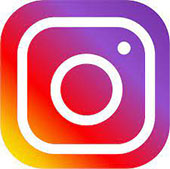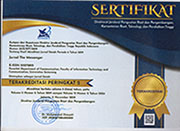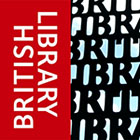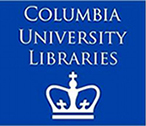Pemanfaatan Situs Web Resmi Lembaga Pendidikan sebagai Sumber Berita oleh Wartawan Surat Kabar Lokal di Yogyakarta
Abstract
Keywords
Full Text:
PDFReferences
Darmastuti, R. (2012). Media Relations (Konsep, Strategi dan Aplikasi). Yogyakarta: Penerbit ANDI.
Dewa Broto, G. S. (2014). The PR: Tantangan Public Relations di Era Keterbukaan Informasi. Jakarta: Gramedia Pustaka Utama.
Idris, I. K. (2010). Manajemen Blog Korporat dalam Membentuk Citra Perusahaan: Studi Kasus Blog Perusahaan Jasa Konsultan PR Maverick Indonesia www.maverickid.com. Dalam Diyah Hayu Rahmitasari (Ed.), Potret Manajemen Media di Indonesia. Yogyakarta: Prodi Ilmu Komunikasi UII dan Penerbit Buku Litera.
Iriantara, Y. (2005). Media Relations (Konsep, Pendekatan dan Praktik). Bandung: Simbiosa Rekatama Media.
Setyanto, Y. & Anggarina, P. T. (2015). Humas pada Perguruan Tinggi Hubungan dengan Media pada Institusi Pendidikan. Dalam Aswad Ihsak (Ed.), Komunikasi dan Isu Publik. Yogyakarta: ASPIKOM, Unika Widya Mandala Surabaya, Univ. Kristen Petra Surabaya, Univ. Muhammadiyah Malang, dan Penerbit Buku Litera.
Dewi, M. (2012). Media Relations 2.0. Jurnal Komunikasi, 7 (2), 17-28.
Dewi, M. dan Prastya, N. M. (2015). Pemanfaatan Website sebagai Sarana Branding Perguruan Tinggi: Studi terhadap Website Resmi Universitas Islam Indonesia (www.uii.ac.id). Proceeding Conference on Communication, Media, and Sociology 2015: Imagining e- Indonesia: Local Wisdom in the Midst of Media Technology and Communciation Policy (297-308). Yogyakarta: Universitas Atma Jaya.
Ekawati, R. (2010). Pemanfaatan Website oleh Kehumasan (Studi Kasus Universitas Negeri Yogyakarta). Tesis Tidak Dipublikasikan. Yogyakarta: Pascasarjana Ilmu Komunikasi, Fakultas Ilmu Sosial dan Ilmu Politik, Universitas Gadjah Mada.
Grunig, J. (2009). Paradigms of Global Public Relations in an Age of Digitalisation. PRism, 6 (2), 1-19.
James, M. (2007). A Review of The Impact of New Media on Public Relations: Challenges for Terrain, Practice, and Education. Asia Pacific Public Relations Journal, 8, 137-148.
Lindic, J. (2006). How do Corporations Use Internet for Public Relations. BLED Proceedings Paper, 7, 1-8.
Macnamara, J. (2010). Public Communication Practices in The Web 2.0-3.0 Mediascape: The Case for PRevolution. PRism, 7(3), 1-13.
Nurjanah, A., Widyasari, W. & Yulianti, F. (2015). Wartawan dan Budaya Amplop (Budaya Amplop pada Wartawan Pendidikan dalam Kaitannya dengan Media Relations). Jurnal Informasi, 45 (1), 15-24.
Pridmore, J., Falk, A., & Sprenkels, I. (2013). New Media & Social Media: What's The Difference? Working Paper for use in: CM 2550 New Media and International Business Departement of Media and Communiation. Erasmus University.
Utari, R. (2013). Website sebagai Media Humas Sekolah. Jurnal Penelitian Ilmu Pendidikan, 6 (2), 78-87.
Wulan, S. (2015). Memahami Kebijakan Redaksional Rubrik Pendidikan di Surat Kabar Harian Solopos. Jurnal The Messenger, 7 (2), 18-25.
Dewan Pers. (2012). Interaksi Jurnalis dengan Media Sosial. URL: http://dewanpers.or.id/opini/detail/65/interaksi-jurnalis-dengan-media-sosial, diakses 12 September 2016.
Meodia, A. (21 Agustus 2015). Yogyakarta, kota Tujuan para Pendatang Indonesia. www.antaranews.com.
Pavlik, J. V. (2008). Mapping the Consequences of Technology on Public Relations. Diakses pada 14 Juli 2012, URL: http://www.instituteforpr.org/topics/mapping-technology-consequences/.
DOI: http://dx.doi.org/10.26623/themessenger.v9i2.509
Refbacks
- There are currently no refbacks.
Copyright (c) 2017 Jurnal The Messenger
View My Stats [Jurnal The Messenger] is an International Scientific Journal, Published by the Department of Communication, Faculty of Information Technology and Communication, Universitas Semarang (Central Java, Indonesia). It is licensed under a Creative Commons Attribution 4.0 International License.



_11.jpg)




_BARCODE.jpg)
_BARCODE1.jpg)


5.png)










2.png)





